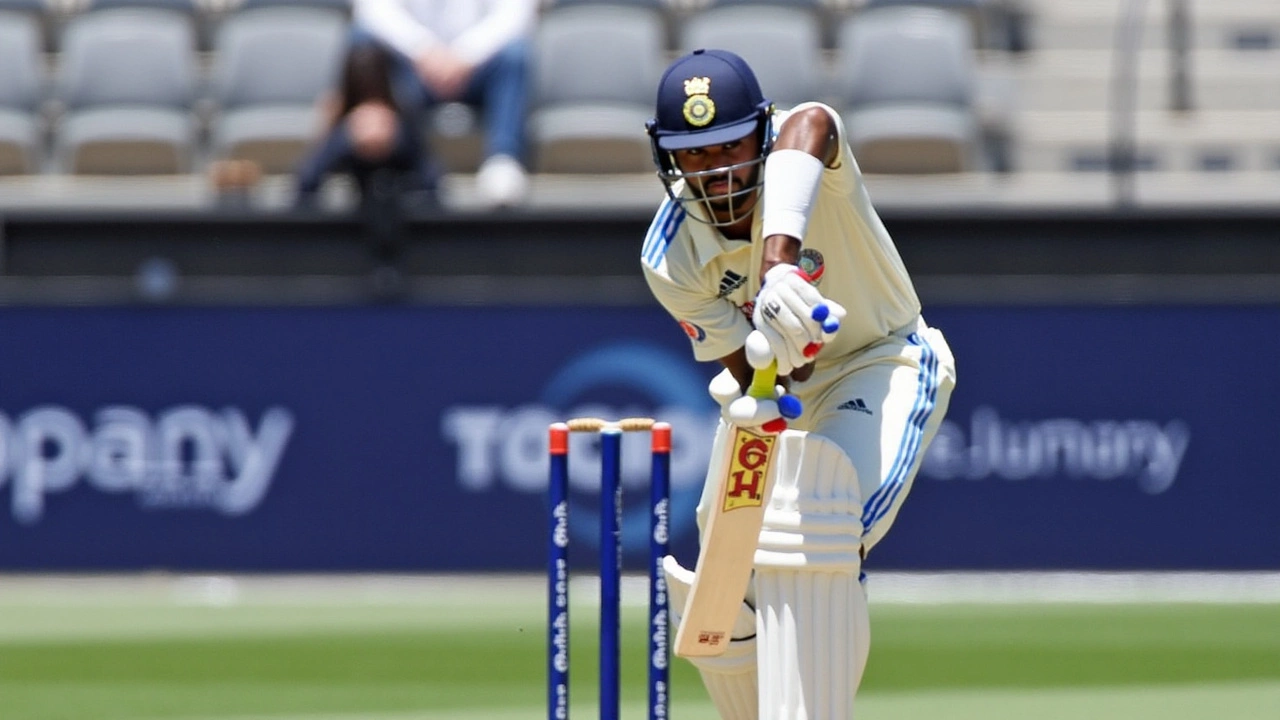KL Rahul's Frustration Over DRS Call
In the electrifying atmosphere of the Perth Test, Indian batsman KL Rahul found himself at the center of a storm brewing over cricket's Decision Review System (DRS). The incident unfolded during the first Test match against Australia, when Rahul was declared out caught behind, a decision that perplexed not only him but also a large segment of cricket enthusiasts. This dismissal came off a delivery bowled by an Australian pace bowler, a moment that would become emblematic of the ongoing debates around the DRS's efficacy in crucial match moments.
The Contentious Decision
The genesis of the controversy lay in the use of the Snickometer, a tool intended to aid in discerning whether or not the ball has made contact with either the bat or pad. During the delivery in question, a noticeable spike appeared on the Snickometer, interpreted by the third umpire as a confirmation of bat contact. This was despite Rahul's protestations that the ball had, in fact, made contact with his pad before anything else. Rahul's belief was that this should have warranted a different verdict—a not-out decision, retaining his wicket and allowing India's top order to sustain its momentum at a crucial point in the match.
DRS: A Double-Edged Sword
The DRS was initially introduced to cricket with the promise of delivering fairness and reducing human error in umpiring decisions. However, as the KL Rahul incident highlighted, its application has not been without controversy. Critics of the system argue that, in cases like this, the technology does not unequivocally validate its findings, instead relying on interpretations that can be swayed by various factors such as the quality of available audio and visual equipment and the human element involved in reviewing the evidence.

Performance Amidst Tension
Despite the incident, Rahul's contribution to the team's success in Perth should not be overshadowed. Although visibly unhappy as he departed for 47, his partnership with young sensation Yashasvi Jaiswal had already laid a solid foundation for India. Jaiswal's innings was a tour de force of technical proficiency and youthful exuberance, signaling his emergence as a force to be reckoned with in international cricket. This formidable duo, alongside the rest of the batting lineup, played a crucial role in setting a challenging target for the hosts.
Jasprit Bumrah's Bowling Masterclass
Armed with a substantial lead, India's bowling attack, with Jasprit Bumrah at the helm, delivered a performance that left the Australian batsmen reeling. Bumrah's impeccable line and length were supplemented by a lethal pace that produced a slew of dismissals and ensured that pressure remained on the opposition throughout their innings. His efforts, combined with those of his fellow bowlers, created a sensation among fans, who applauded the disciplined approach and strategic execution.
Impact on the Series
India's victory by 295 runs was a decisive statement of the team's capability and adaptation to the Perth conditions. The win was not just a testament to individual brilliance, but a cohesive team effort that emphasized unity and resilience. Yet, it also spotlighted the lingering questions surrounding the use of technology in cricket—a conversation that grows in complexity with each contested decision.
The Role of Technology in Cricket's Future
The debate over the DRS calls attention to the balance of modern technology and traditional elements in the game. For many purists, the essence of cricket lies in human judgment and the unpredictability that comes with it. However, as matches are increasingly defined by the precision of umpires' decisions, the pressure to enhance accuracy through technology intensifies. The challenge is finding a middle ground that values human intuition without completely obfuscating it with mechanical precision.

Conclusion: A Moment for Reflection
As the dust settled on the dramatic Perth Test, there was a sense of vindication among the Indian squad and its legion of fans. Yet, the shadow of the DRS controversy lingered, prompting discussions that will likely influence future rule adjustments and technological integrations in the sport. For KL Rahul, his experience may serve as a catalyst for ongoing dialogues concerning players' engagements with review systems and the robustness of the technology that underpins these pivotal choices. Cricket, a sport deeply steeped in its traditions, continues to evolve, and moments like these are part of the sport's journey in the modern era.



